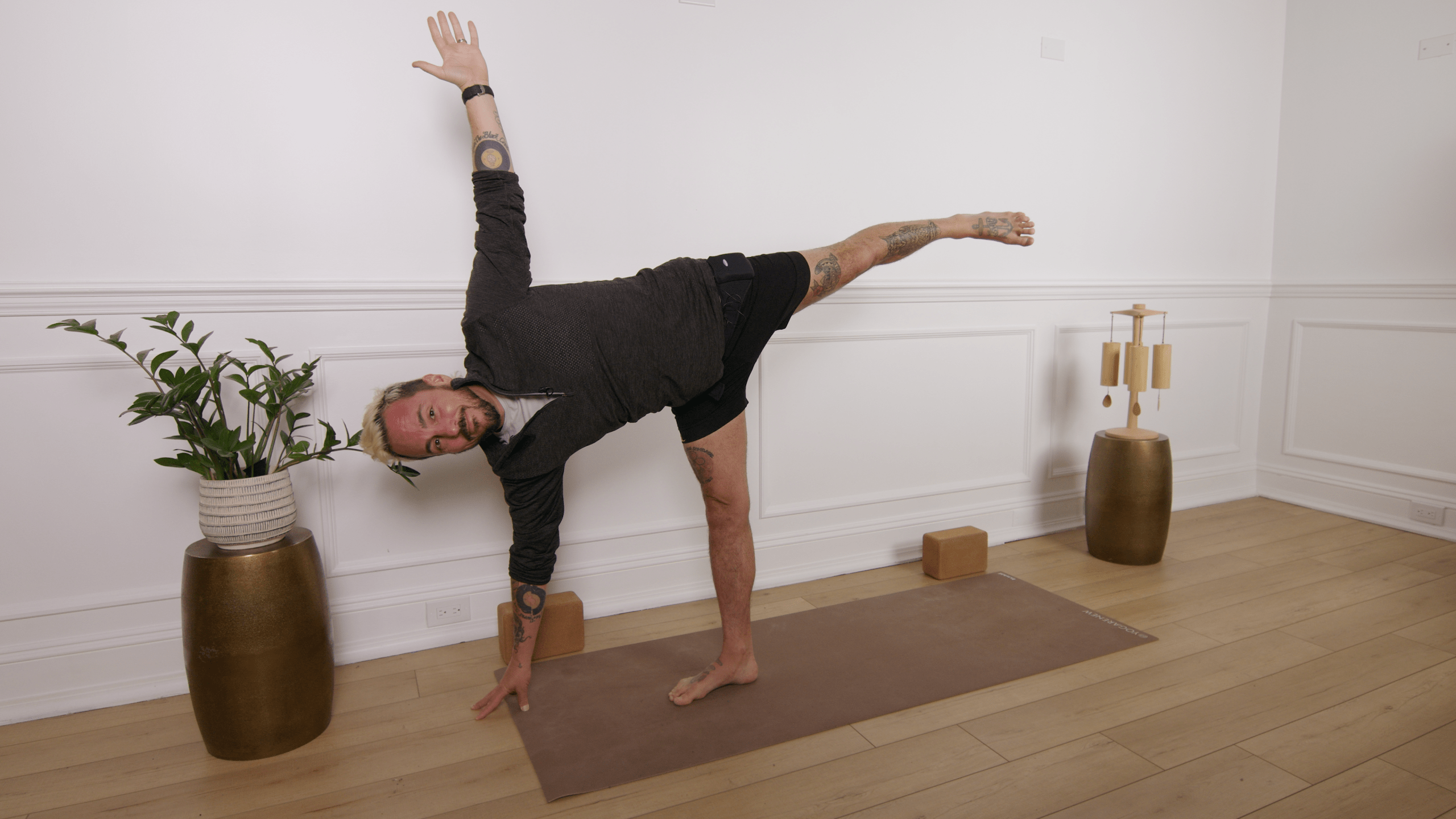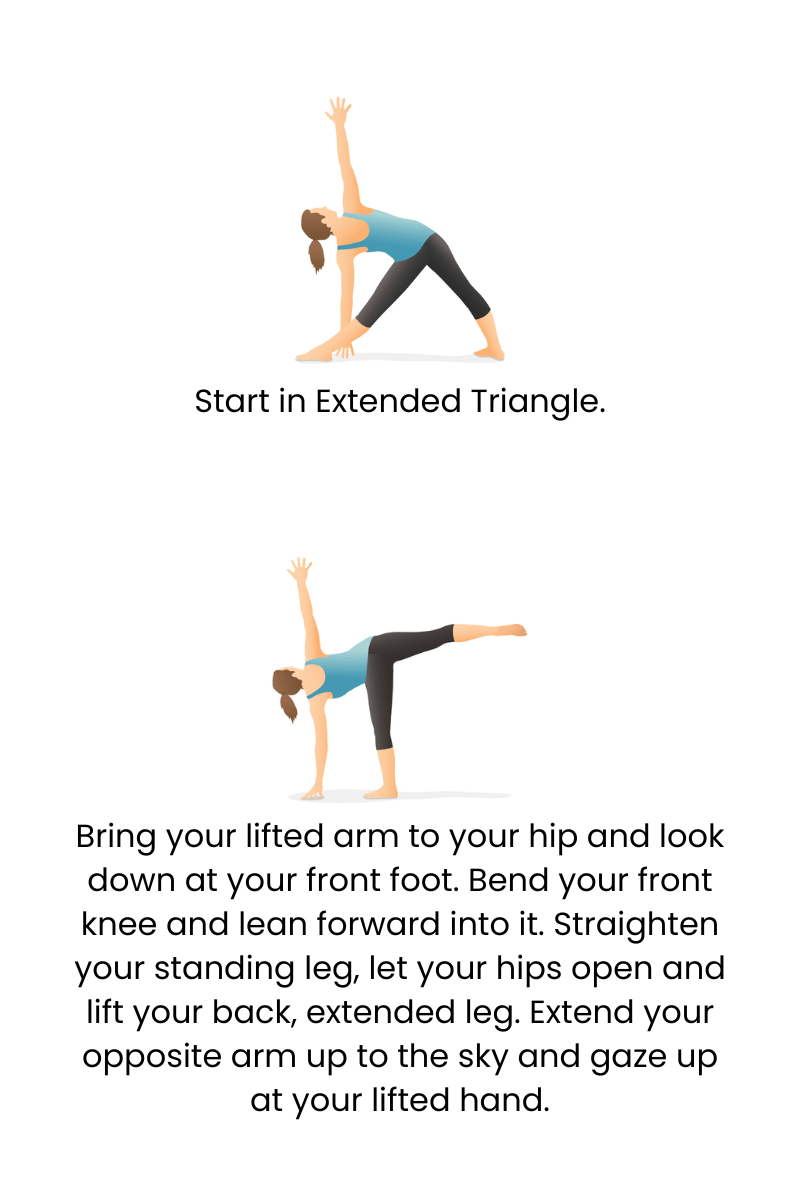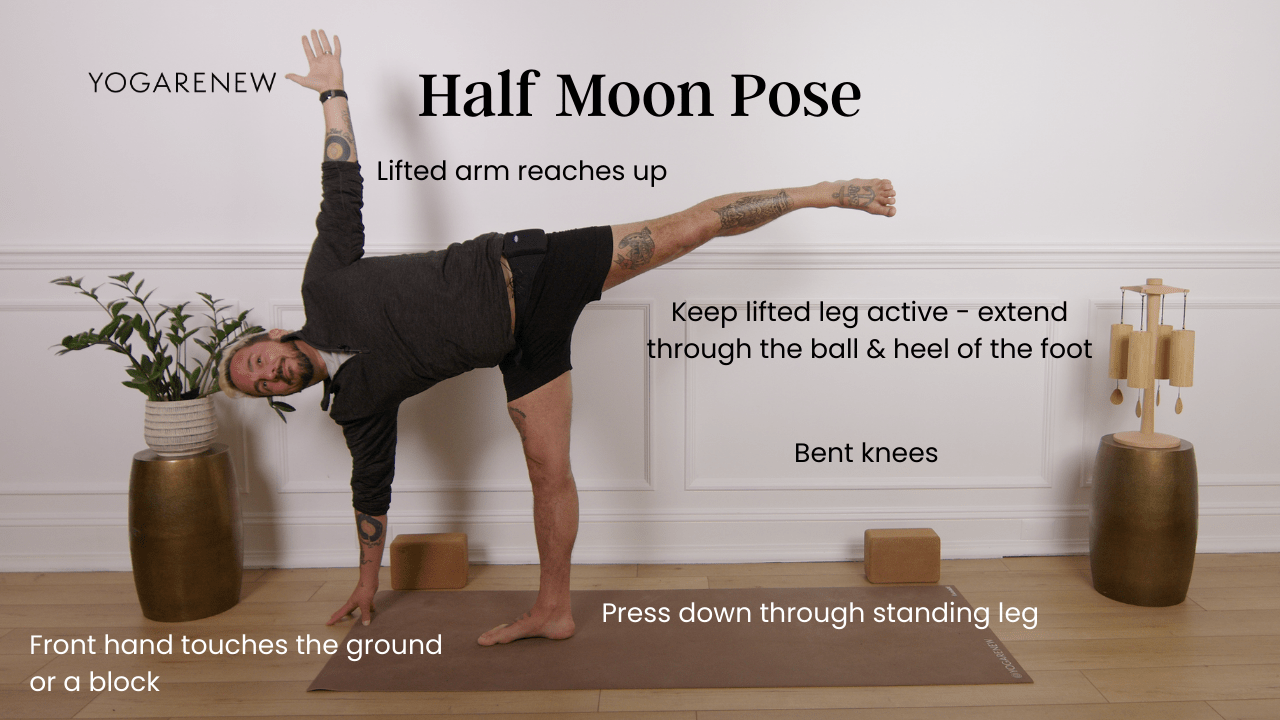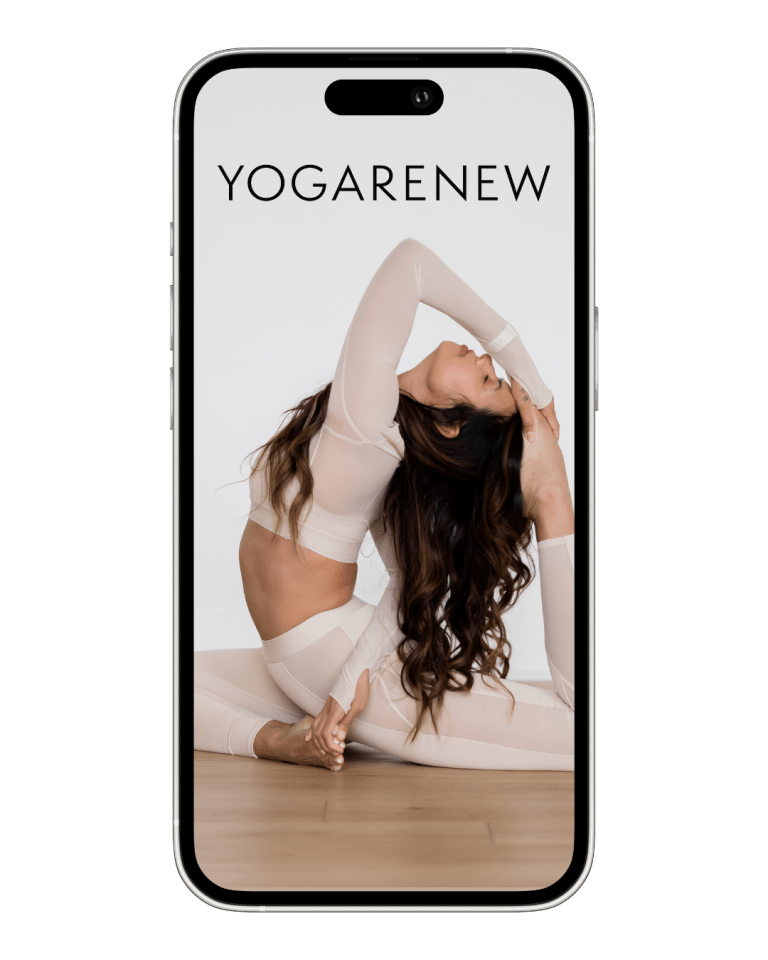What is Half Moon Pose?
English Name: Half Moon Pose
Sanskrit Name: Ardha Chandrasana (pronounced ARE-dah chan-DRAHS-uh-nuh)
Category: Standing, Balance, Hip Opener, Backbend, Intermediate

English Name: Half Moon Pose
Sanskrit Name: Ardha Chandrasana (pronounced ARE-dah chan-DRAHS-uh-nuh)
Category: Standing, Balance, Hip Opener, Backbend, Intermediate
Ardha Chandrasana, or Half Moon Pose, is a dynamic standing balance that builds strength, stability, and expansion. With one hand grounded and the other reaching skyward, this posture opens the hips, lengthens the spine, and activates the core—requiring focus, presence, and breath awareness.
Named after the “half moon,” this pose symbolizes both grace and strength. Whether practiced independently or as part of a flow, Half Moon invites lightness and lift through the entire body.


Half Moon Pose embodies both strength and spaciousness. It requires grounded awareness through the standing leg and expansive energy through the torso and lifted limbs. Practicing Ardha Chandrasana sharpens focus, improves coordination, and helps cultivate grace under pressure. Whether you’re building your balance or refining your alignment, Half Moon offers a chance to find lightness in effort and clarity in stillness.
Yes—placing a block under the bottom hand can greatly improve stability and alignment.
With modifications and support, beginners can safely explore Half Moon.
Triangle has both feet on the ground, while Half Moon lifts one leg and challenges balance more intensely.

Explore classes & pose tutorials for any style, format, duration or experience level with a free account in the YogaRenew app. Or subscribe and gain access to workshops, live classes and more.